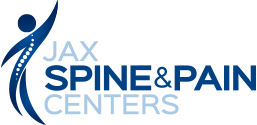Call 904.223.3321 to Schedule an Appointment TODAY
Pain medications after surgery
Both short-term & long-term pain management after surgery is imperative. Severe pain after surgery is typical and treatable. Modern pain medications and anesthesia can control post-surgical pain and help your body heal.
If you’re having surgery, it’s natural to have concerns about pain after the procedure, as well as the risks that come with powerful pain medications. Controlling pain and minimizing side effects are both important for post-surgical comfort, recovery and rehabilitation.
The time to talk about post-surgical pain relief and pain medications is before you have surgery. Preparation can lead to more effective pain management.
Planning for surgery
Before surgery you will likely have a discussion with your surgeon or other members of your care team about pain management, treatment options and your particular needs.
Pain expectations. Ask your doctor about typical pain in conjunction with the procedure and the expected duration of recovery.
- Previous experiences with pain. Talk to your doctor about your experience with pain and different methods of pain control. Mention what has worked for you and what hasn’t in the past.
- Chronic pain. If you take drugs to treat chronic pain, your body may be less sensitive to pain medication. Your doctor will discuss options for treating both chronic pain and post-surgical pain.
- List of your medications. Include all prescription and over-the-counter medications, plus any supplements or herbs you’ve taken in the past month. Your doctor needs to know about anything that might interact with post-surgical pain medications. You may need to change your drug regimen before and after surgery.
- Alcohol and drug use. Accurately describe your current use of alcohol, tobacco or illicit drugs. Your doctor needs to know if you are recovering from addiction to — or currently abuse — alcohol or drugs, including prescription medications, in order to plan and monitor your pain management.
- Side effects. Ask for written information about the drugs you will be prescribed and their side effects. Ask questions about what can be done to minimize side effects and when to get help for serious side effects.
- Additional pain management. Ask your doctor about interventions that may support your treatment plan, such as psychobehavioral interventions to address anxiety or coping skills.
- Discussion of your concerns. If you’re afraid of side effects or overdosing on pain medications, talk to your doctor. He or she can help you understand strategies to safely manage your pain.
Types of pain medication (Read more here)
Post-surgical pain is usually managed with multiple pain-reducing medications (analgesics). The appropriate type, delivery and dose of medications for you depend on the type of surgery and expected recovery, as well as your own needs.
Pain medications include the following:
- Opioids, powerful pain medications that diminish the perception of pain, include fentanyl, hydromorphone, morphine, oxycodone, oxymorphone and tramadol. Examples of opioids prescribed in pill form after surgery include oxycodone (Oxycontin, Roxicodone, others) and oxycodone with acetaminophen (Percocet, Roxicet, others).
- Local anesthetics, such as lidocaine and bupivacaine, cause a short-term loss of sensation at a particular area of the body.
- Nonsteroidal anti-inflammatory drugs (NSAIDs) — such as ibuprofen (Advil, Motrin IB, others), naproxen (Aleve, Anaprox, others), celecoxib (Celebrex) or ketorolac — lessen the inflammatory activity that exacerbates pain.
- Other nonopioid pain relievers include acetaminophen (Tylenol, others) and ketamine (Ketalar).
- Other psychoactive drugs that may be used for treating post-surgical pain include the anti-anxiety medication midazolam or the anticonvulsants gabapentin (Gralise, Horizant, Neurontin) and pregabalin (Lyrica).
Your surgeon will likely prescribe a combination of treatments to control pain, lessen side effects, enable you to resume activity appropriate for recovery and lower risks associated with opioids.
Managing the risks of opioid use
Opioids are critical for post-surgical pain management because of the drug’s powerful effect. But side effects can be significant, including nausea, vomiting, constipation, urinary retention, drowsiness, impaired thinking skills and poor respiratory function.
Overdosing and abuse of opioids also are risks, particularly when opioids are used to treat ongoing (chronic) pain. While the use of opioids after surgery is intended as a short-term strategy to relieve pain while the body heals, the risk of abuse is still a concern.
The U.S. surgeon general launched an initiative in 2016 to address the growing problem of opioid overdose and misuse. The program has initiatives for doctors to educate their patients, screen and regularly reassess for misuse of opioids, assess pain management regularly, use nonopioid drugs when possible, and treat addiction.
The program also provides strategies to help you lessen risks for yourself, as well as others:
- Taking medication only as directed, minimizing dosage and duration of opioid use
- Talking to your doctor when your pain is not under control
- Not using alcohol while taking opioids
- Following your doctor’s instructions about other drugs not to take while using opioids
- Storing drugs safely
- Disposing of unused drugs, ideally through a pharmacy take-back program
- Not sharing your medication with other people
Pain relief after major surgery
A primary goal of pain management after major surgery is for you to awaken relatively comfortable and to experience an uninterrupted transition to pain control. Some discomfort is common and should be anticipated after surgery.
Intravenous (IV) pain medication
Before surgery, you’ll most likely have a slender plastic tube (catheter) inserted into a vein in your hand or arm. This is to give you fluids, sedatives, anesthetics, antibiotics or pain medications. The catheter can be used for delivering pain medications until you can take pills by mouth.
An injection for pain relievers, such as opioids, will come from your IV catheter at regular intervals. Most hospitals also offer patient controlled analgesia. PCA is a system that allows you to give yourself a fixed dose of the medication by pushing a button. This way you don’t have to ask a nurse for each dose of pain medicine.
The PCA system has built-in safeguards to prevent you from overdosing on pain medication. If you push the button more than once within a set period of time, the dispenser ignores the second request.
Epidural analgesia
In epidural analgesia, an injection of pain medications through a catheter inserted into the epidural space within your spinal canal but outside your spinal fluid. An epidural catheter is often used for labor and delivery, and sometimes before an operation, such as cesarean section or major abdominal surgery.
The epidural catheter can be left in place for several days if you need to control postoperative pain. A continuous infusion of pain relievers, including local anesthetics or opioid medications, is deliverable through the catheter to control pain.
Patient controlled epidural analgesia (PCEA), similar to PCA, enables you to give yourself a dose of the pain medication by pushing a button. It, too, has built-in safeguards so that you don’t give yourself too much medication.
Spinal anesthesia
Some surgeries can be done with spinal anesthesia, which involves medications injected directly into the spinal fluid.
Spinal anesthesia is easier and faster than epidural analgesia is. However, it doesn’t last as long because there’s no catheter to allow the administration of additional medication. Your doctor can add a long-acting opioid to the spinal medication that can relieve post-surgical pain for up to 24 hours.
Nerve block
A nerve block uses a local anesthetic to provide targeted pain relief to an area of your body, such as an arm or leg. It prevents pain messages from traveling up the nerve pathway to your brain. Nerve blocks are available for outpatient procedures or more-involved inpatient surgery.
For pain relief lasting several hours, an injection for a nerve block is available. For longer pain control, insert a catheter for continuous medicine delivery or patient-controlled delivery.
Wound infiltration anesthesia
Your surgeon may inject an anesthetic drug at the wound site during the procedure or place a catheter for post-surgical drug delivery. This means of local anesthesia may reduce the use of opioids during your recovery.
Pain relief after minor surgery and during home recovery
Your doctor will provide you with instructions for general post-surgical care, such as rest, ice packs, rehabilitative exercises and wound care. Ask to have written instructions to bring home with you.
For minor surgeries these steps may be the primary means for pain management. After major surgery, they will help you with a more comfortable transition off medication.
You will likely switch to oral pain medication before leaving the hospital and continue to take them at home to manage pain. You will most likely take a combination of drugs in pill form, that will include the following:
- Opioids
- Acetaminophen
- NSAIDs, such as ibuprofen and naproxen
As with pain management in the hospital, the combination of drugs that you use at home can result in fewer opioid side effects and lower the risk of opioid dependence.
Be sure to understand what active ingredient is in each pain medication. Ask your doctor about possible interactions with over-the-counter drugs you might use. Examples include: cold medicine, or other prescription medications or supplements you regularly take.
Your role in pain control
After surgery, work with your health care team to make your recovery as prompt and pain-free as possible. You’ll need to communicate with your doctors and nurses to help them assess and adjust the pain management plan.
- Be honest about the pain you feel after surgery. Let your doctors and nurses know how much it hurts, where it hurts, and what activities or positions make it better or worse. Your health care team will want to know the intensity of pain on a 0 to 10 scale, where 0 is no pain and 10 is the worst pain you can imagine. The more specific you can be, the better your doctors can help you.
- Don’t ignore side effects. Tell your care team if you experience sleepiness, constipation, nausea or other side effects of the medications. A different pain medication or dose can sometimes reduce uncomfortable side effects. These side effects are often treatable and relievable.
Support Matters. Read more from Jax Spine & Pain Centers and find out why we are the practice for you.







